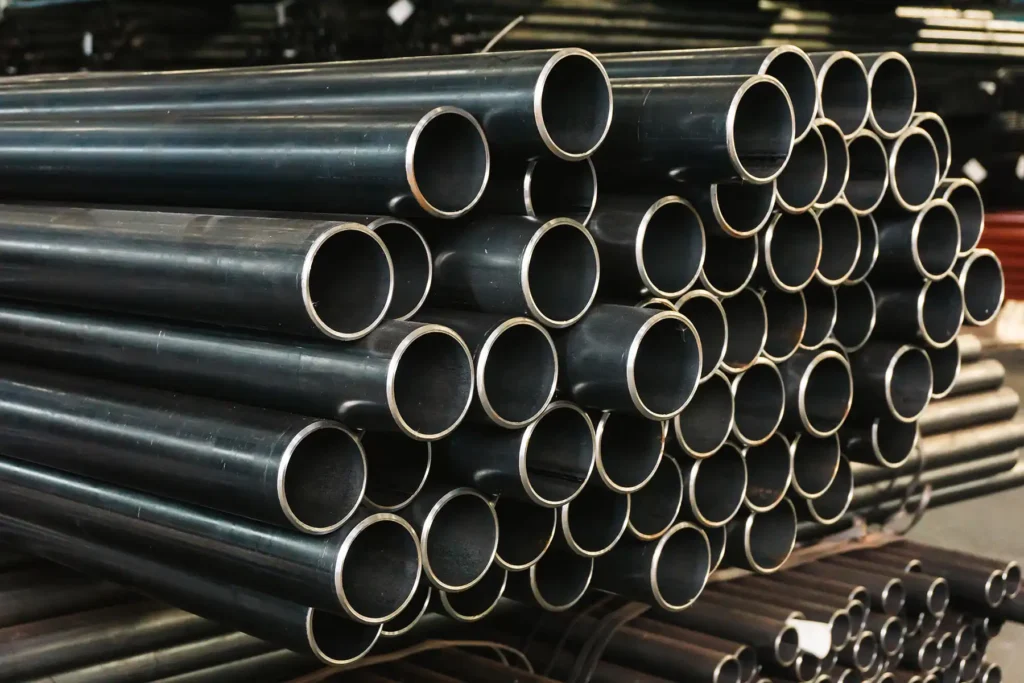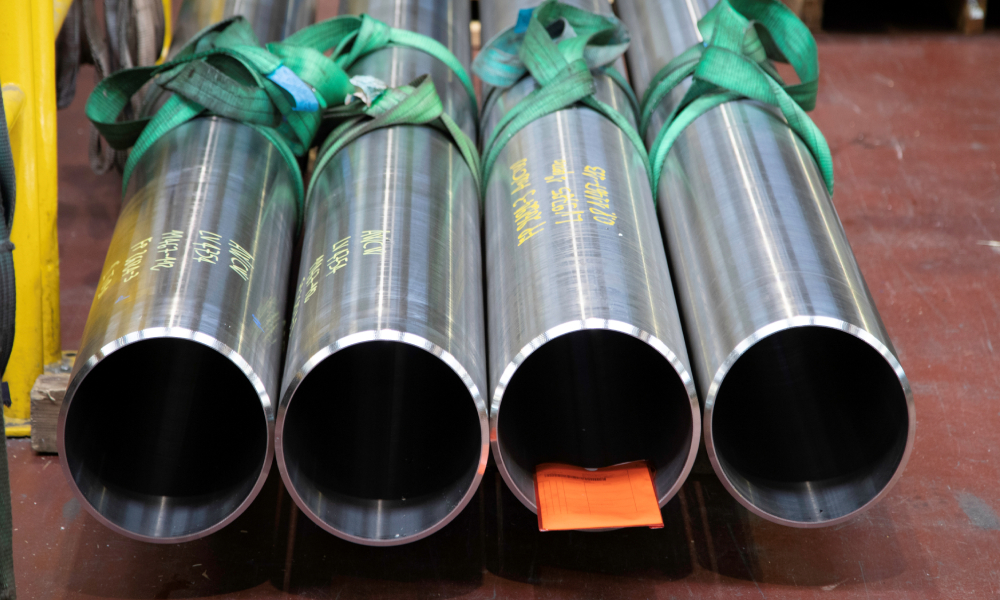Seamless steel pipes are an essential component in various industries, including oil and gas, chemical processing, and power generation. The manufacturing process of seamless steel pipes involves several stages.
Raw Material Selection
What is the Seamless Steel Pipe Manufacturing Process? The first stage of the seamless steel pipe manufacturing process is raw material selection. The raw materials used for seamless steel pipes include steel billets, steel blooms, and steel slabs.
The selection of raw materials depends on the desired properties of the final product, such as strength, corrosion resistance, and thermal conductivity.
Forming
The raw materials are then formed into a cylindrical shape using a process called rolling. The rolling process involves heating the raw materials to a high temperature.
And then shaping them using a series of rollers. The rollers apply pressure to the raw materials, causing them to deform and take the shape of a cylinder.

Piercing
After the raw materials have been rolled, they are pierced using a piercing machine. The piercing machine uses a high-speed cutting tool.
To create a hole in the center of the cylindrical shape. The hole is then expanded using a series of cutting tools to create the desired diameter.
Finishing
The final stage of the seamless steel pipe manufacturing process is finishing. The finishing process involves several steps, including cutting, grinding, and polishing.
The cut pipes are then ground to remove any imperfections and to achieve the desired length. Finally, the pipes are polished to improve their surface finish and to remove any rust or corrosion.
Quality Control
Quality control is an essential aspect of the seamless steel pipe manufacturing process. The pipes are inspected for any defects, such as cracks, pinholes, or corrosion.
The pipes are also tested for their mechanical properties, such as tensile strength, yield strength, and elongation.
Applications
Seamless steel pipes have a wide range of applications in various industries, including:
- Oil and gas: Seamless steel pipes are used in oil and gas wells, pipelines, and refineries.
- Chemical processing: Seamless steel pipes are used in chemical plants for the transportation of chemicals and other corrosive materials.
- Power generation: Seamless steel pipes are used in power plants for the transportation of steam and other high-temperature fluids.
- Automotive: Seamless steel pipes are used in the automotive industry for the manufacture of exhaust systems, fuel lines, and brake lines.

Conclusion
In conclusion, the seamless steel pipe manufacturing process involves several stages, including raw material selection, forming, piercing, finishing, and quality control.
The pipes are used in various industries, including oil and gas, chemical processing, power generation, and automotive.
By understanding the manufacturing process, industries can make informed decisions about the type of seamless steel pipes they require for their specific needs.